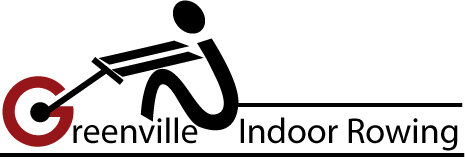At GIR we don’t hold any classes based on distance, because if we did somebody would finish last, and that’s not a good motivational tool. Our classes are based on time, so that we all start and we all finish at the same time. Everyone works at their own intensity level. Nobody ever finishes last at GIR!
So how do you determine your intensity level during our classes? This all revolves around what we call a “Cruise Pace”. On the second line of your monitor you will see a time in minutes and seconds per 500 meters. It is expressed as M:SS / 500m and is also known as a split time. With each stroke you take, that time changes and shows you how long it takes you to row 500 meters at the intensity level of your leg drive. The harder you push with your legs, the more resistance you will create, while also lowering the time required to go 500 meters. You are totally in charge of your resistance level, based on the power of your leg drive.
So, how does it work in class? Everything revolves around Cruise Pace in our workouts. Cruise is a time that is a sustainable intensity level. It is a number on line two of your monitor that you can maintain and still carry on a conversation if you wanted to. Everybody has a Cruise Pace, but everybody’s is different, because we are all at different fitness levels.
What the Instructor will say during the workout: “Let’s go out at Cruise.” That means that everyone should push hard enough with their legs to hit their Cruise Pace time on line two and maintain that time. Let’s use 2:50 /500m as a sample Cruise Pace in the following discussion. “Let’s go to 5 below Cruise or Cruise minus 5”. You now need to push harder with your legs to make that number on line two drop to 2:45. “Go to Cruise minus 10 or 10 below Cruise.” You now need to push harder so that the time on line two drops to 2:40. Cruise minus 15 would take you to 2:35 and Cruise minus 20 would take you down to 2:30.
When do I establish my first Cruise Pace? Work on your technique first. The numbers will take care of themselves once the technique kicks in. That said, establish your first Cruise Pace as soon as possible. You will see better results and will get more benefit out of your classes.
Is my initial Cruise Pace forever? NO !! Once you can handle all of your drops and not feel like you are going to die when at 15 and 20 below Cruise (yes, you will be breathing really hard and sucking wind), it is time to lower your Cruise Pace. So the person that started at 2:50 in our example above would lower their Cruise Pace to 2:45 as their technique, fitness level, strength and endurance improves.
What is “Easy Paddle”? Easy paddle is just moving on the erg (commonly used term for the indoor rower) and catching your breath during rest periods. It has no relationship to your Cruise Pace number. It is just moving on the machine, catching your breath and getting ready to work hard again.
What about Stroke Rate? There are basically two things we watch on our monitors, our 500m split time and our stroke rate. The stroke rate is shown either in the upper right or the lower left hand corners, depending on which screen display you have chosen. As a rule of thumb, to maintain your Cruise Pace you should be at around 24 SPM (strokes per minute). To go to 5 below, you have to push harder with your legs and increase you SPM to around 26. To go to 10 below, use more leg power and increase your SPM to 28. Likewise, 15 below Cruise requires even more leg power and a higher SPM around 30, etc.
Please don’t hesitate to ask your Instructor for additional guidance, support or input regarding “Cruise Pace” or anything else about your GIR experience.

